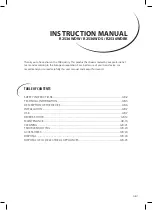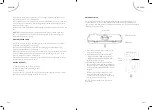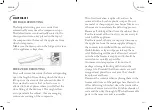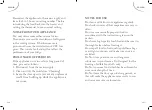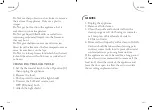
ENGLISH
ENGLISH
GB-17
GB-16
MAINTENANCE
FRIDGE DEFROSTING
FREEZER DEFROSTING
The fridge defrosting process is carried out
automatically every time the compressor stops.
The defrost water is automatically routed to the
drain port and into a tray placed on the top of
the compressor to the rear of the appliance from
which it evaporates.
Make sure the drain port on the fridge at the rear
of the appliance is kept clear.
Frost will accumulate inside the freezer depending
upon the length of time during which the door is
left open or the amount of moisture introduced.
It is essential to ensure that no frost or ice is
allowed to form at places where it will affect the
close fitting of the door seal. This might allow
air to penetrate the cabinet, thus encouraging
continuous running of the compressor.
Thin frost formation is quite soft and can be
removed with a brush or plastic scraper. Do not
use metal or sharp scrapers, mechanical devices or
other means to accelerate the defrosting process.
Remove all dislodged frost from the cabinet floor.
For the removal of thin frost it is not necessary to
switch off the appliance.
For the removal of heavy ice deposits disconnect
the appliance from the mains supply and empty
the contents into cardboard boxes and wrap in
thick blankets or layers of paper to keep them
cold. Defrosting will be most effective if carried
out when the freezer is empty, and it should be
carried out as quickly as possible.
An increase in temperature of frozen food
packages during defrosting will shorten the
storage life. Provided that the contents are well
wrapped and placed in a cool area, they should
keep for several hours.
Examine the contents when replacing them in the
freezer and if some of the packages have thawed out.
After defrosting is finished clean the inside with a
solution of warm water with a little bicarbonate of
soda and then dry thoroughly. Wash all removable
parts in the same way and reassemble.







